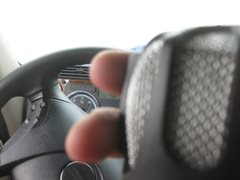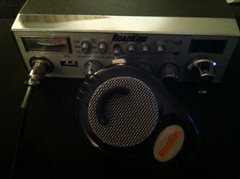
The CB radio was invented in 1945 by Al Gross. Initially, the CB was popular with working class employees such as: carpenters, plumbers and electricians. They often used the CB to communicate with coworkers and home base. CB clubs began to form and the hobbyist created their own slang language along with ten codes that were similar to those used by emergency services.

It could be said that the CB radio was the original social media platform. The 1970’s witnessed CB usage explode. The United States government had issued a 55 mph nationwide speed limit in response to the sky rocketing fuel prices. Truck drivers and car drivers alike learned that CB radios were a great took for communicating with other drivers to find out where gas stations were located which still had fuel available and to notify speeders where “police” had speed traps set up. The original 23 channels soon became crowded and in 1977 additional channels were opened up and the 40 channel CB radios were introduced into the market.
Events in the news added to the excitement as reports of some truck drivers used the CB radio to organize convoys to protest against high fuel prices and new trucking regulations. This new found communication device also started to play an important role in movies such as: Smokey and the Bandit, Convoy and various television shows. Also, on the regular radio the song “Convoy” by CW McCall was played quite regularly.
The CB radio up until now still required a license from the FCC to legally operate. The cost was approximately $20.00 in the early 1970’s and fell to $4.00 in the late 1970’s. There were many rules to be followed in regards to antenna height, distance restrictions, allowable transmitter power and call sign rules. Large numbers of people ignored these rules and began using “handles” to identify themselves on the CB radio. Eventually, the FCC dropped the license requirement after being overwhelmed with millions of applicants per month. The new culture was already developed and people continued to use handles in place of their real name or call sign. This could be compared somewhat as the new social media back then. It was so popular that even former first lady of the United States Betty Ford had a CB handle which was “First Mamma.”
A form of etiquette began early on in which you weren’t to chit chat for more than a few minutes as this was deemed uncourteous to tie up the channel for others. It was also frowned upon to curse or key up your mic while someone else was transmitting. As the radio became increasingly popular, most of the etiquette was completely thrown out the window and a new type of person emerged, often referred to as a CB Rambo. Being behind a mic…the so called CB Rambo would often say things that he/she wouldn’t say to someone in person or face to face. With all of its popularity, the airwaves became crowded and courtesy and etiquette were gone. However, the slang remained and even transcended the CB and became part of everyday vocabulary. For example, you will still here people today say 10-4.
As we advanced into the cell phones, satellite radio and other social media communication, the use of the CB waned to the point that I can listen to channel 19 without hearing anyone for a long time. I sometimes wonder if we are farther ahead as I’ve encountered times when it would have been beneficial if someone would have been listening or tuned in to the CB. For example, when I see a truck ahead of me with a tire going flat or a strap coming lose on a flatbed load and there is no way to communicate. Usually, I just have to drive up and wave my mic to the driver in hopes that they get tuned in in order to alert him/her of the situation. Also, CB’s are important to pre-warn one another of upcoming traffic congestion or hazards up ahead. Today, if you’re not tuned in and if nobody is transmitting, hazards such as a crashed vehicle just ahead, around a curve etc… are not made known.

I wanted to write this blog as I’ve been thinking a lot lately about the CB and its role in highway safety in the past and maybe even in the future. Facebook, Twitter and Instagram are great forms of communication; however they don’t serve to warn us of important highway hazards that may lie just ahead or around the bend.
I wonder how many of the large vehicle pile ups that we’ve seen recently could have been avoided by someone keying up their mic to warn drivers about an accident. Drivers traveling the opposite direction could have been notified potentially, however those drivers would need to have their CB radio turned on and turned to channel 19.